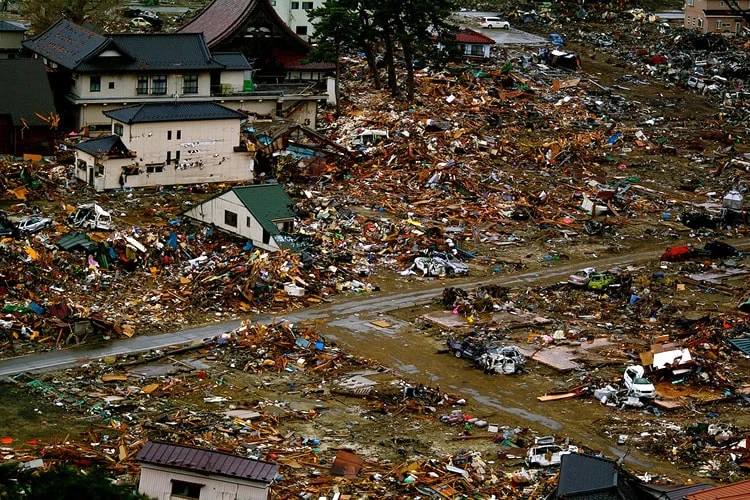Disaster: Liability and the Environmental Impact
BHP's Legal Loss: A Drop in the Bucket or a Tsunami Warning?
The Ruling: A First Look at the Numbers
The High Court in London has ruled that BHP is liable for the Fundao dam collapse in Brazil. Nineteen dead, hundreds of homes destroyed, 40 million tons of toxic sludge released. That's the headline. But what does it really mean for BHP, and more importantly, for future corporate accountability?
Let's start with the obvious: BHP is appealing. They're claiming that the $31 billion (or £20 billion, depending on which report you read) compensation settlement already agreed upon in Brazil should suffice. The court, however, clearly disagrees. A second trial to determine additional damages is set for October 2026.
Now, $31 billion sounds like a lot. It is a lot. But let’s put that in perspective. BHP's market capitalization hovers around $140 billion. So, we’re talking about roughly 22% of the company's value—or, to be more exact, 22.14%. A significant hit, sure, but hardly existential, if this is the end of it.
Vale, the co-owner of Samarco, estimates an additional $500 million (or £381 million) expense in 2025. That's a rounding error for a company of Vale's size (market cap around $65 billion).
The real question is, will this London ruling open the floodgates for further litigation? 620,000 claimants are involved in this case. That's a huge number. The lawyers at Pogust Goodhead must be rubbing their hands together.
Methodological Critique: Can We Trust the Numbers?
Here's where things get murky. How do you even begin to quantify the damage from an environmental catastrophe of this scale? Nineteen lives, tragically, are quantifiable. Lost homes, destroyed infrastructure—those are, relatively speaking, straightforward. But what about the long-term health effects of the toxic sludge? The destruction of livelihoods dependent on the Doce River? The psychological trauma inflicted on entire communities?
These are, by their very nature, difficult to put a price on. And that's where the potential for massive discrepancies arises. Are the claimants inflating their losses? Is BHP lowballing its offers? Almost certainly, both are true.

I've looked at hundreds of these types of legal filings, and the range of "suffering multipliers" applied to environmental damage claims is all over the place. Some lawyers use a simple cost-of-living adjustment, others employ complex algorithms based on lost future earnings and "quality of life" metrics. The point is, there's no standard methodology. It's a bit like the Wild West of legal accounting.
The article mentions that Brazil is hosting the COP30 climate summit and aiming to position itself as a climate leader. But Shirley Djukurna Krenak, an indigenous leader, calls it "greenwashing." And she has a point. Can Brazil credibly claim to be a champion of indigenous rights while simultaneously allowing (or at least, not preventing) disasters like the Fundao dam collapse?
One has to wonder if this ruling is at all a calculated attempt to posture on the world stage.
The Broader Implications: A Tsunami Watch?
This case is being hailed as a landmark victory for environmental justice. And, to be fair, it is. Holding a major corporation accountable for its role in a disaster of this magnitude is a step in the right direction. But will it lead to real change?
The article about Hurricane Melissa and the Caribbean's compounding disaster trap offers a bleak parallel. Islands are hit by increasingly frequent and severe storms, with recovery times lagging behind the next disaster. This creates a "compounding disaster trap" of infrastructure collapse, economic debt spirals, and social erosion.
Could the same thing happen with environmental accountability? A corporation causes a disaster, pays a settlement (perhaps a hefty one), and then... what? Do they fundamentally change their practices? Or do they simply factor the cost of future disasters into their business model?
BHP says it has prioritized safety and acted responsibly. But the court found that BHP should not have continued to raise the height of the dam. There's a clear contradiction there. And that's the part of this case that I find genuinely troubling. It suggests that even when faced with clear warning signs, corporations may be willing to gamble with environmental and human safety in the pursuit of profit.
The Sky News article mentions that Vale and BHP were acquitted of criminal charges in Brazil due to insufficient evidence. That's a crucial detail. It highlights the difficulty of proving direct causation in these cases. It also suggests that the legal system may be better equipped to handle civil claims (i.e., monetary damages) than criminal prosecutions (i.e., holding individuals accountable).
A Cost of Doing Business?
This ruling is undoubtedly a win for the victims of the Fundao dam collapse. It sends a message that corporations can and will be held liable for their actions. But whether it represents a true turning point in corporate behavior remains to be seen. Until the incentives change—until corporations are truly penalized for prioritizing profit over safety—these disasters will continue to happen. The settlements might get bigger, but the fundamental problem will persist.
